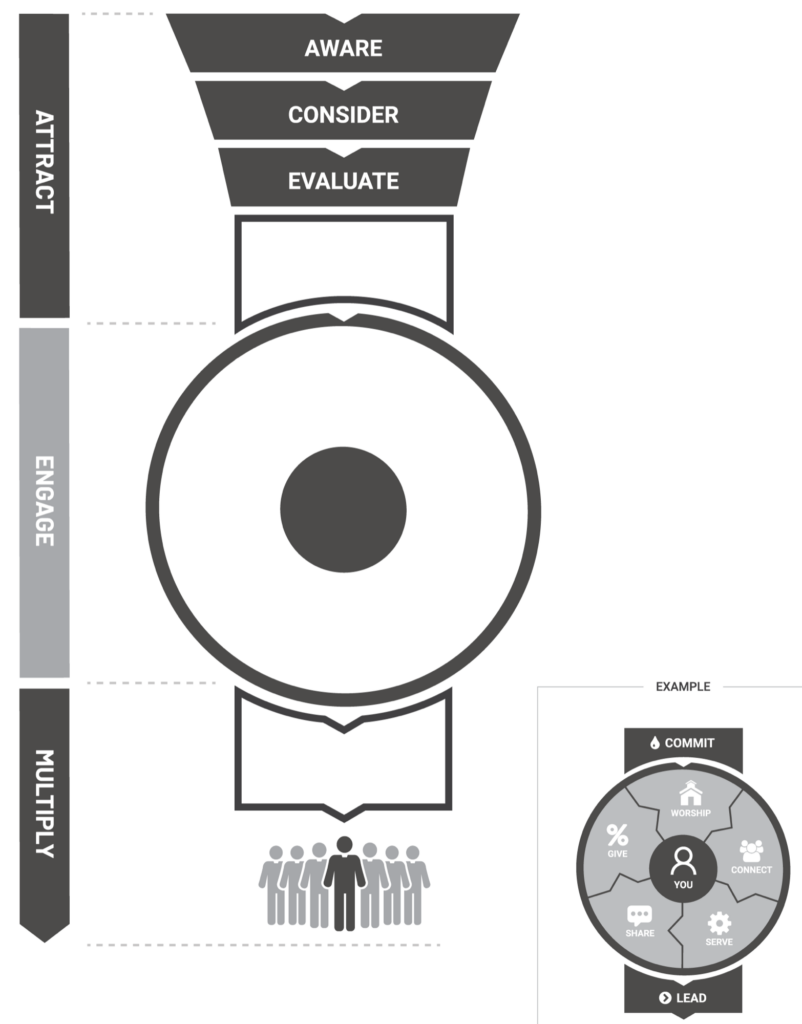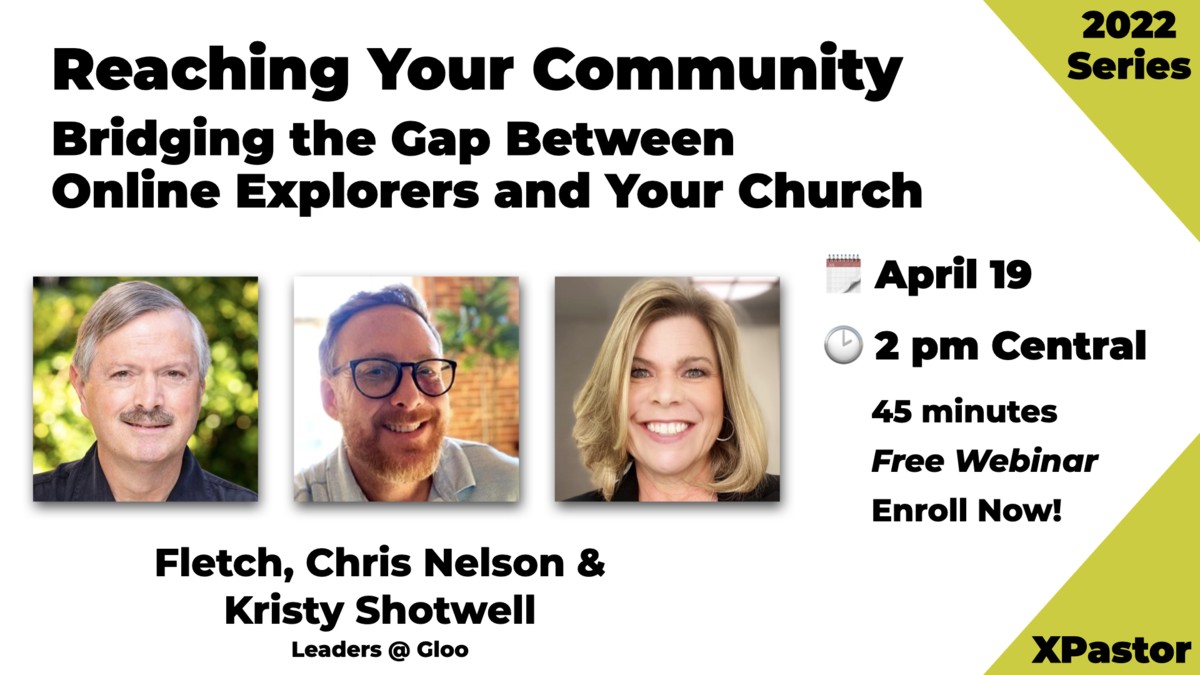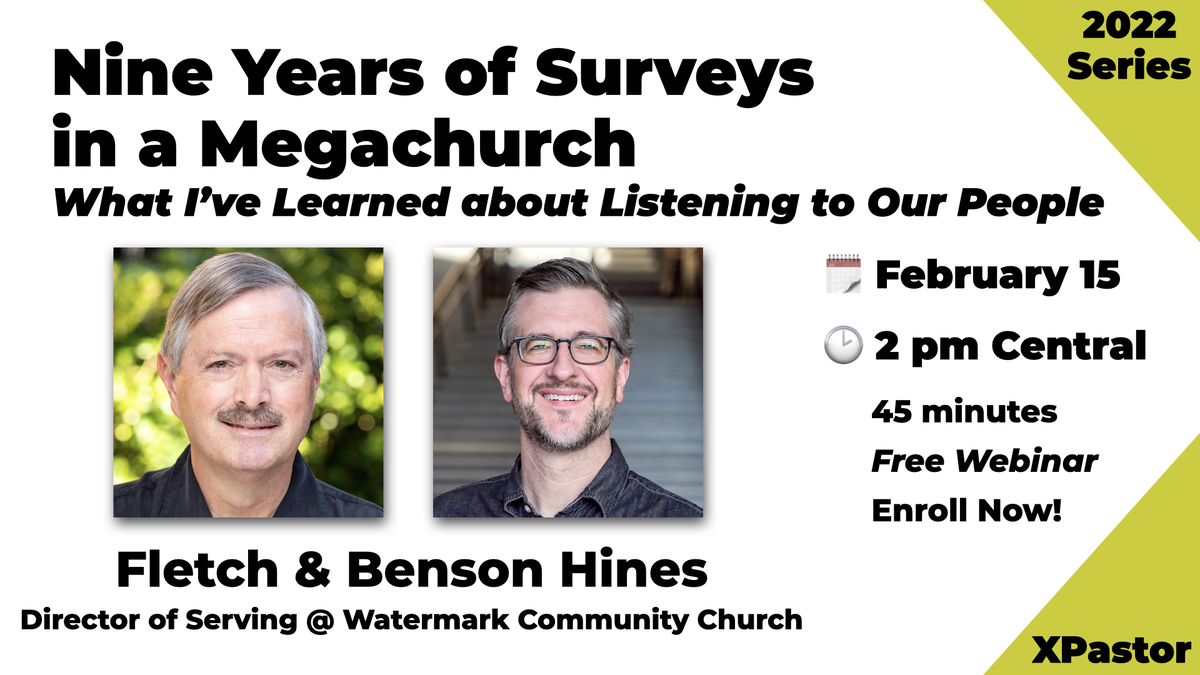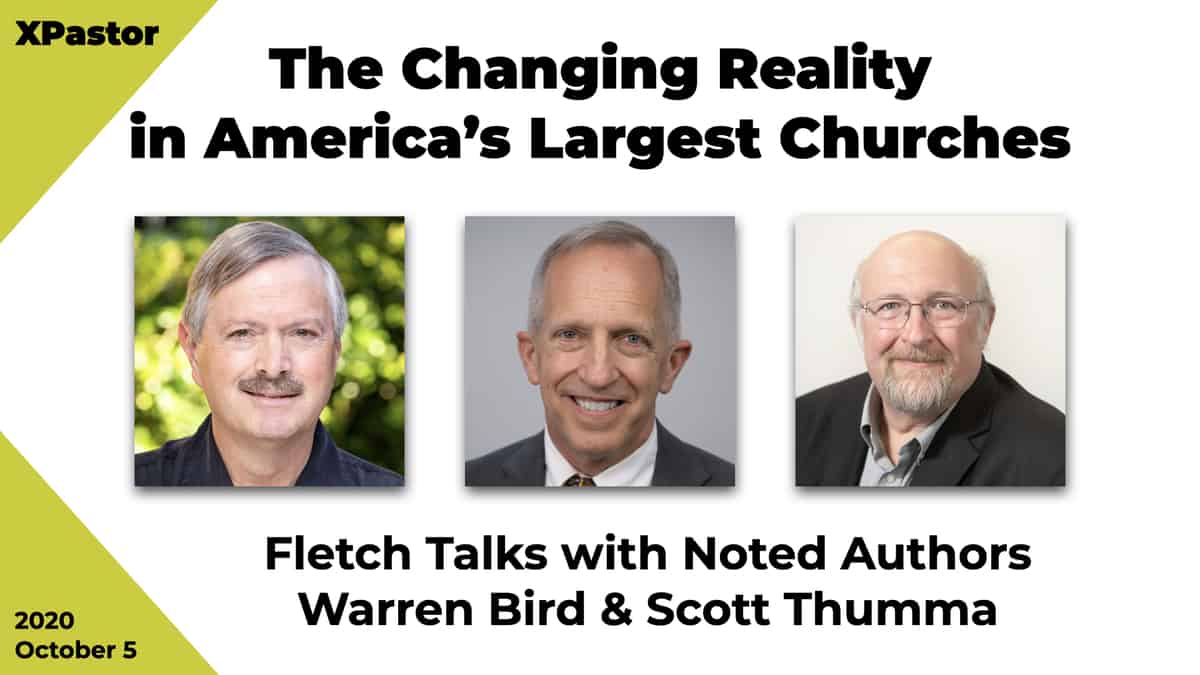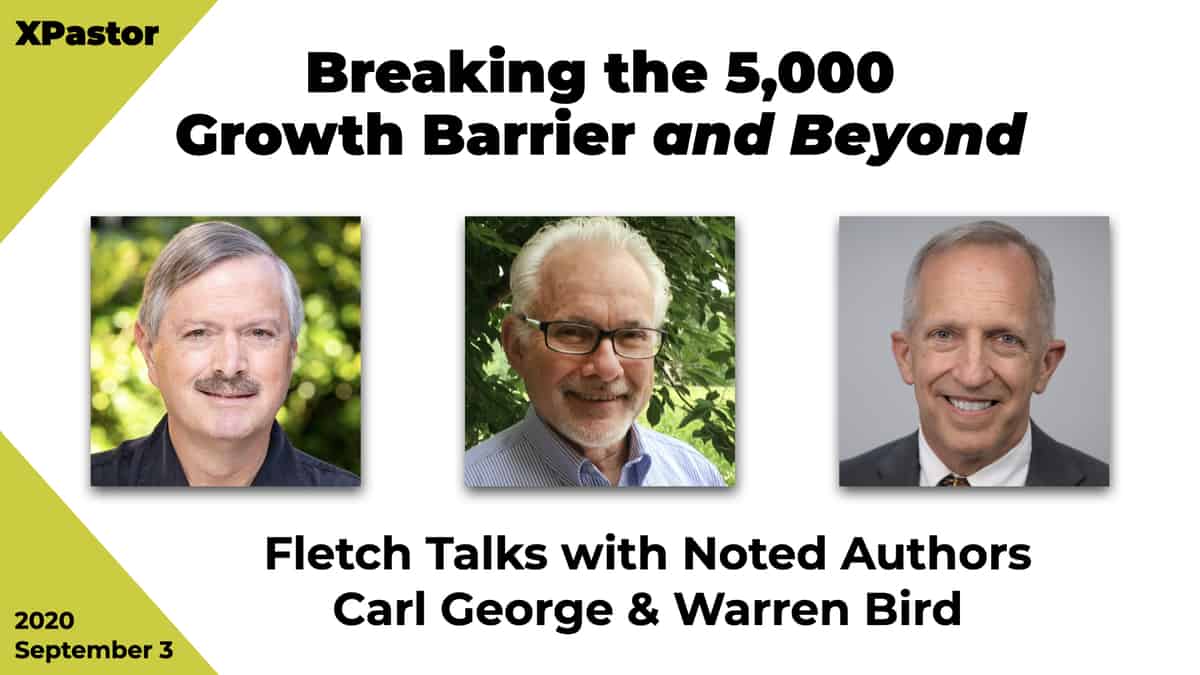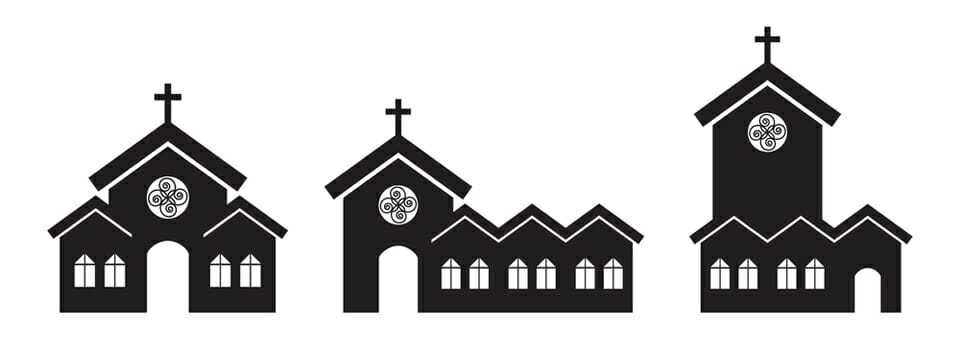Making disciples is at the heart of every church. However, gone are the days when it was possible or practical for pastors to greet all members at the church door and know what’s going on in their lives. Most churches now have more members than a single pastor can speak to in a single day, members spread out at different physical campuses, and may have members exclusively online, as well as everywhere in between. Don’t miss the Member Life Cycle image at the end of the article!
What has not changed is that true discipleship building takes personal connections. Jesus modeled it and the strategy has withstood the test of time: engagement at the personal level is necessary for spiritual transformation. How does the church maintain personal connections? What proven strategies can the church leverage to create disciples?
Marketing, data, analysis, strategy—these can be intimidating or offensive market terms to churches. However, when used through the lens of the Great Commission, these business terms don’t remove authenticity, they deepen it. Articulating your member lifecycle or engagement strategy will help you know your people and grow your church.
Connecting Through Engagement Marketing
Engagement marketing is about treating the customer as a unique individual, meeting them where they are at, and engaging with them as quickly as possible. Simply put: getting the right message to the right person at the right time and preferably in the right way.
As a follower of Jesus we do have a specific or narrow path, and our job as the church is to guide and resource people to find a life with Christ. This is simply the strategy we go about to do it. This isn’t a theological discussion but a strategic discussion. For engagement, everything has to start with a solid strategy centered on knowing, matching and communicating with your members.
In marketing, there is something we call the Customer Lifecycle. It is made up of a purchase funnel at the top, an engagement wheel in the middle, and an advocacy component at the end. Everything about our strategies are predicated on that movement; we’re trying to move people down the cycle and through the wheel. Fully engaging with the congregation requires a multi-layered approach to the member lifecycle methodology.
Moving through the Layers
The goal at the start of the lifecycle, is simply to make someone aware we exist. We’re a church, this is who we are, this is what makes us stand out. We’re not trying to save them or get them baptized. Our only goal in the awareness layer is to get them to consider going to church, which is the next step.
Once an individual is in the consideration stage of their lifecycle, they are intrigued. They want to learn more. The consideration often happens on a website. The website needs to be designed to move people to the next layer, which is to evaluate.
An evaluation layer is the first time visit. This is when somebody decides to actually come check out the church. The whole goal of the evaluation layer is for us to encourage the individual to move on to the next stage: the commitment. People are often turned off by the church when it’s too assertive in the evaluation layer. If people are bombarded with information, invites and pamphlets when they are just there to see and hear what the church is about, worship, or consider what faith means to them and if your church is fit for cultivating that faith—it can be too much.
The key to getting people to the commitment layer is to understand the timing; where they are in their life or spiritual stage and create tailored communication messages. A generic, one-size-fits-all, across-the-board shout-out doesn’t work as well. You need to communicate and interact with the visitor, providing channels for them to explore further options on their own time and at their own pace. Less pressure, combined with empathetic communications, means individuals more likely to come back—and commit in their own authentic timing.
Committing to the Wheel
The marketing world calls the commitment phase the purchase. For example, if I want to look for a phone, I’m going to evaluate the iPhone versus the Samsung versus an Android. At some point, I decide to buy a phone—that’s the commitment. For the church, the commitment usually takes on the form of making a decision to follow Christ or be baptized: I’m committing to a life with Christ through baptism or I’ve already been baptized, but I’m committing to a local church.
A lot of places—a lot of churches—stop right there. They stop at the commitment layer, or don’t leave the opportunity for congregants to move past the commitment layer, because there are no clear engagement steps to take. We may shout suggestions from the stage, but the strategy ends there.
I compare moving past the commitment layer to engagement as a wheel. For most of us as a church, the wheel is our discipleship program. I’ve seen a lot of discipleship programs that are linear: you take this step and then another. The problem is that spiritual development is not always linear. People are at different stages of life, they grow in different ways, the Holy Spirit speaks to them uniquely.
So, I represent discipleship as a wheel and tell people that you can come in at any point to participate. There is no set Step A or Step B. All parts of the wheel are accessible and lead to another.
Non-linear Discipleship: Keeping the Wheel Spinning
A wheel represents forward motion and interconnected parts. These are the general interconnected spokes of the church member’s engagement wheel:
- Worship—You need to worship God both as a community and personally. This is often the weekend experience, reading the Word, prayer, etc.
- Connect—Connecting with like-minded people in Small Group Ministry or as part of the various events. We have all learned that “circles are better than rows” and facilitating smaller settings to develop community leads to growth.
- Serve —One thing that I’ve seen over and over again with small churches; they look at their volunteer base as a way to lower their labor rate. They typically go to people and encourage serving, because it’s where they have a need. As part of the lifecycle, we see serve as part of a member’s spiritual development; it’s about them—how can they grow closer to the Lord through the act of serving? This can include serving at the church or in the community or going on a mission trip.
- Give—Giving is a fuel for a church, but I believe that giving is part of the spiritual development process. This is often accomplished through the tithe and, hopefully, radical generosity.
- Share—This is all about evangelism. When people share their faith, their spiritual development actually grows as much as the development of people they’re speaking to. Sharing what Jesus has done in your life is the springboard for sharing the gospel. A personal invitation to church is the best form of promotion.
All of these elements are part of the member lifecycle, or the engagement wheel that each individual will go through. Of course, these steps should reflect the specific discipleship journey that is defined at your church and the names should represent your vernacular and culture. While your list may look slightly different, it should not be too long; the list should only include the discipleship essentials that every member would participate in. The goal is to have simple, specific steps that are clearly articulated in a way that can be measured and monitored; with the objective of ministry along the discipleship path. Other activities may exist and encourage a member’s faith, but are ancillary to the core member lifecycle; for example mission trips or class completions.
When people are active in the cycle, or fully engaged, they become what the marketplace calls an advocate, aka an evangelist in the church world. They become brand ambassadors who are compelled to tell everybody about Jesus. That’s the point.
In broad terms, it’s every church’s mission to simply win people to Christ (the top piece of the funnel or our strategy), take those new believers and train them to be disciples (go through the engagement wheel), and send those disciples out in the world to bring more people to Christ (becoming advocates). That’s the Great Commission.
A Discipleship Strategy that Grows
In every industry, whether marketplace or church, curating customized care to individuals keeps them around longer.
A customized experience is key, and what people expect in a long term relationship. Being transparent about the lifecycle and the status of a member puts everyone on the same page, establishing expectations. Sharing this information creates connection points for them and the church. It also allows the church to reach out to members uniquely based on where they are and what they need. That’s ministry, at its best.
Pro-tip
The next level in managing member lifecycles is applying predictive analytics to anticipate what a member’s next predictive step may be. Is it serving? If it’s serving, what is their rhythm of life? Do they travel or have small kids? Are they a young adult, or an elder? Using data, you can match them up to serve alongside similar people and find the best place for them to serve. And share specific, custom messages that present these details with them.
At the end of the day, how and when we communicate with our people matters. Making them feel relevant, making them feel known with personalized content in a fast-paced digital era speaks volumes. The methods will look different, so let technology be your friend and carry the heavy load.
We can make people feel welcomed and known as they embark on a discipleship journey. Strategy isn’t a sin. Marketing frameworks can define and focus your efforts. Data isn’t the enemy. These are tools, and if used wisely, they are tools that can further the kingdom. If you know your people and cultivate the member lifecycle, you will build disciples and your church will grow.
Use the template below and kick start your engagement wheel.
